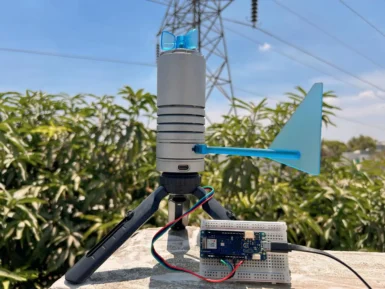
Overview
Do you want to install your Arduino UNO project into a control cabinet? Look no further!
The ArduiBox Open DIY kits house an Arduino board and mount it to a DIN rail.
The kit comes with a prototyping board and a 5V voltage regulator (soldering required).
Along the edges of the prototyping board, all the IO and power pins are connected and marked.
Furthermore you can add an Arduino shield to the mainboard.
You can connect your work via terminals with the world outside the enclosure.
Please Note: This is the newer V2 version of the ArduiBox. Assembly (including solder) required. Arduino board not included.
Included in the kit:
- ArduiBox Enclosure Prototyping PCB Voltage regulator kit
- Reset switch
- Pin headers and terminal blocks Screws
Features:
- Milled cab rail enclosure
- Transparent top shell compatible with EN50022 DIN rails
- Prototyping plate - fits perfectly in the enclosure
- All Arduino pins are connected to marked pins beside the breadboard
- 4x 3-pin terminal blocks 1x 2-pin terminal block
- Sockets for popular Arduino boards in UNO or NANO shape
- Sockets for an optional shield (directly connected to the Arduino) contains parts for a 5V/1.5A voltage regulator (Vin 9...35V DC)
- Reset button (reachable via openings in the enclosure)
*The boards and shields in the pictures are not included.
Get Inspired
Using the Garmin LIDARLite v3HP, Arduino MKR WIFI 1010 and Pushsafer to detect an intruder and send a push notification to a smartphone.

Being able to monitor the weather in real-time is great for education, research, or simply to analyze how the local climate changes over time. This project by Hackster.io user Pradeep explores how he was able to design a simple station outdoors that could communicate with a cloud-based platform for aggregating the sensed data. The board Pradeep selected is the Arduino MKR WiFi 1010 owing to its low-power SAM D21 microcontroller and Wi-Fi/BLE connectivity for easy, wireless communication. After configured, he connected a DFRobot Lark Weather Station, which contains sensors for measuring wind speed/direction, temperature, humidity, and barometric pressure — all in a compact device. Every second, the MKR WiFi 1010’s sketch polls the sensors for new data over I2C before printing it to USB. The cloud integration aspect was achieved by leveraging Qubitro’s platform to collect and store the data for later visualization and analysis. To set it up, Pradeep created a new device connection and copied the resulting MQTT endpoint/token into his sketch. Then once new data became ready, it got serialized into a JSON payload and sent to the topic where a variety of widgets could then show dials and charts of each weather-related metric. To read more about this DIY weather station, you can visit Pradeep’s project write-up here.











